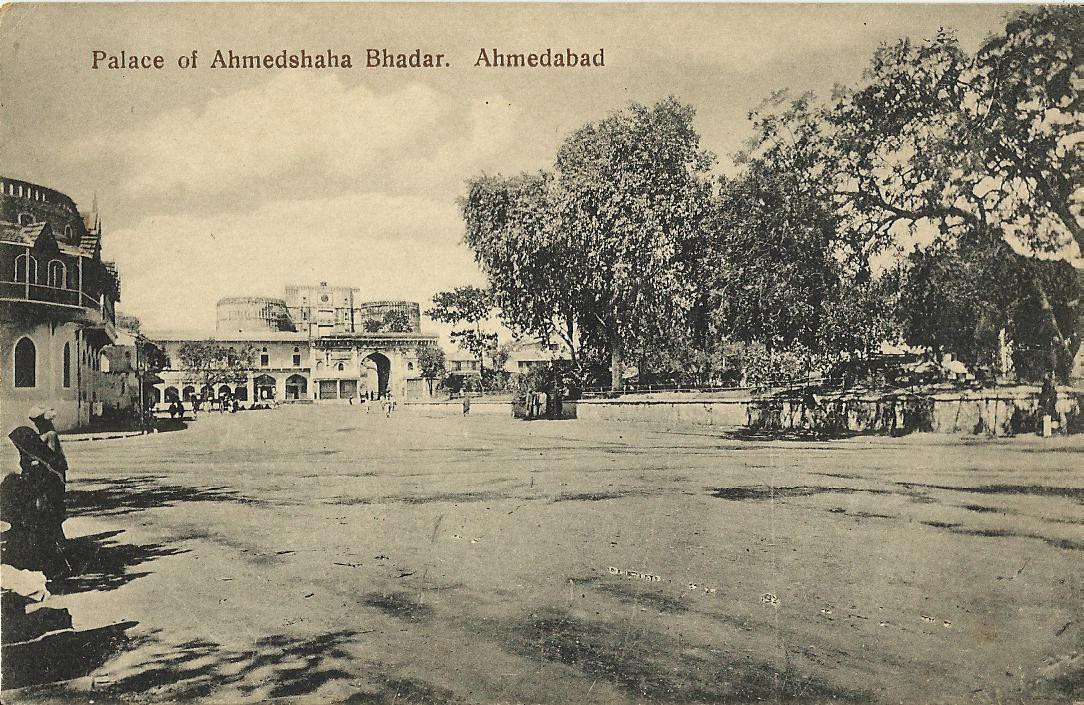My City’s Journey From Manchester City to Mega City.

Over the centuries, Amdavad has been the majestically rolling city from time to time. We have a memorable history of grandeur followed by a decline and back to grandeur.
As we all know, the city is named Ahmedabad in the honor of the king Ahmed Shah who established this city in the year 1411. From the day of establishment of the city, the city has evolved in a thousand different ways, from fall to rise, each phase equally glorifying.
Trailing back to the end of 14th century, the beginning of this magnificent new era took place. Thanks to Ahmed Shah for being the fan of art he was, he decided to not just build a city, but to also give the city something that lasts more than a decade or a century; something that will leave the mark on world for as long as mankind survives. And that was the time when Ahmedabad was gifted with monuments like Jama Masjid (1424), the step well of Dada Harin (1435), the mosque of Sidi Saiyed, the tomb of Shah Alam, the shaking towers of Sidi Bashir’s mosque and so many others.
As the city was under the reign of Mughal rulers until the 18th century, hence most of the architecture was of Indo-Islamic style.
By the 16th century, the Europeans started to describe Ahmedabad, as a city as big as London! They said Ahmedabad is the handsomest city of Hindustan or maybe perhaps in the world. But as every good thing comes to an end, same thing happened with the city. The trade started to leave and its hold over the business started to loosen. This changed Ahmedabad and it never recovered.
Mr. Forbes in 1781 once said, “The city’s commerce once met with every encouragement. The city was a resort for artists, business-men, traders etc. which now exhibits solitude, poverty and desolation.” Thirty six years after that when Mr. Dunlop, the first British collector returned to the city, he said he had returned to the city of ruins. It was that period of the city when it felt like the city was back to square one.
With the building of the Ellis bridge in the year 1870, the seeds of urbanization were planted. Ahmedabad soon took itself to a whole new level because of its booming development of industrial sector and thereby becoming the “Manchester city of India” having a turn-over of 3 million Rs per year in 1970.
But soon the pretty dream came to an end again and the decline started to progress again! Not only did the entire textile sector shut down but also communal riots for political issues broke over the chaos. It was one of the biggest nightmare ever witnessed by the city. The air of city once again turned blue and such an economic meltdown made it seem almost impossible for it to rise again.

As we all know that everything happens for a reason and maybe it was for a reason too, because having lost the minerals of traditional business from the soil people realized that there were various other minerals present in it. It was the time when the seeds planted in 1870’s finally started to grow and once again the air of the city turned it’s direction to a complete new path. Urbanization!

In an effort to move beyond the memories of the ruins of being Manchester of India, urban administrators, politicians and media resorted to an imaginary stereotypes of globalized modernity like efficient infrastructure, economic growth, leisure etc. And soon the once upon a time Manchester city became the Mega city with the highest per capita income at world level.
And this is how, my city became Mega City from the Manchester City.

From rural to urban, we have came a long way and we still do have a long journey ahead of us, but behind all these, one thing has always been constant which is the Spirit of Ahmedabad.
Spirit of acceptance, spirit of love, spirit of life, spirit of compassion, spirit of existence, spirit of change all in all the spirit of Amdavad ♥ For it reminds me I am no more a small town girl, but more like a majestically royal town girl.
For it teaches me that if a city as big as this and as royal as this can fall to pieces just to rise above it all, we are merely people with not so big issues, so if our city can, so can we!
About the author:

Khushi is a conservation engineer, heritage enthusiast and a keen researcher. She is the director of Khushtar Heritage Collective, an organisation that works to engage youth in the field of heritage conservation. She is the founder of Indian Heritage, a social media website and account that aims to promote the rich and diverse heritage of India. She is also the recipient of the Martin Weaver Research scholarship awarded by the Association of Preservation Technology for her research on the conversation of Pol houses of Ahmedabad. Currently, she is the Wiki World Heritage coordinator at Wiki World Heritage.
She is associated with several heritage organisations like ICOMOS, ISCARSAH, APTAPT (Association for Preservation Technology), ESACHESACH, EUROPA NOSTRA, ASCE etc

